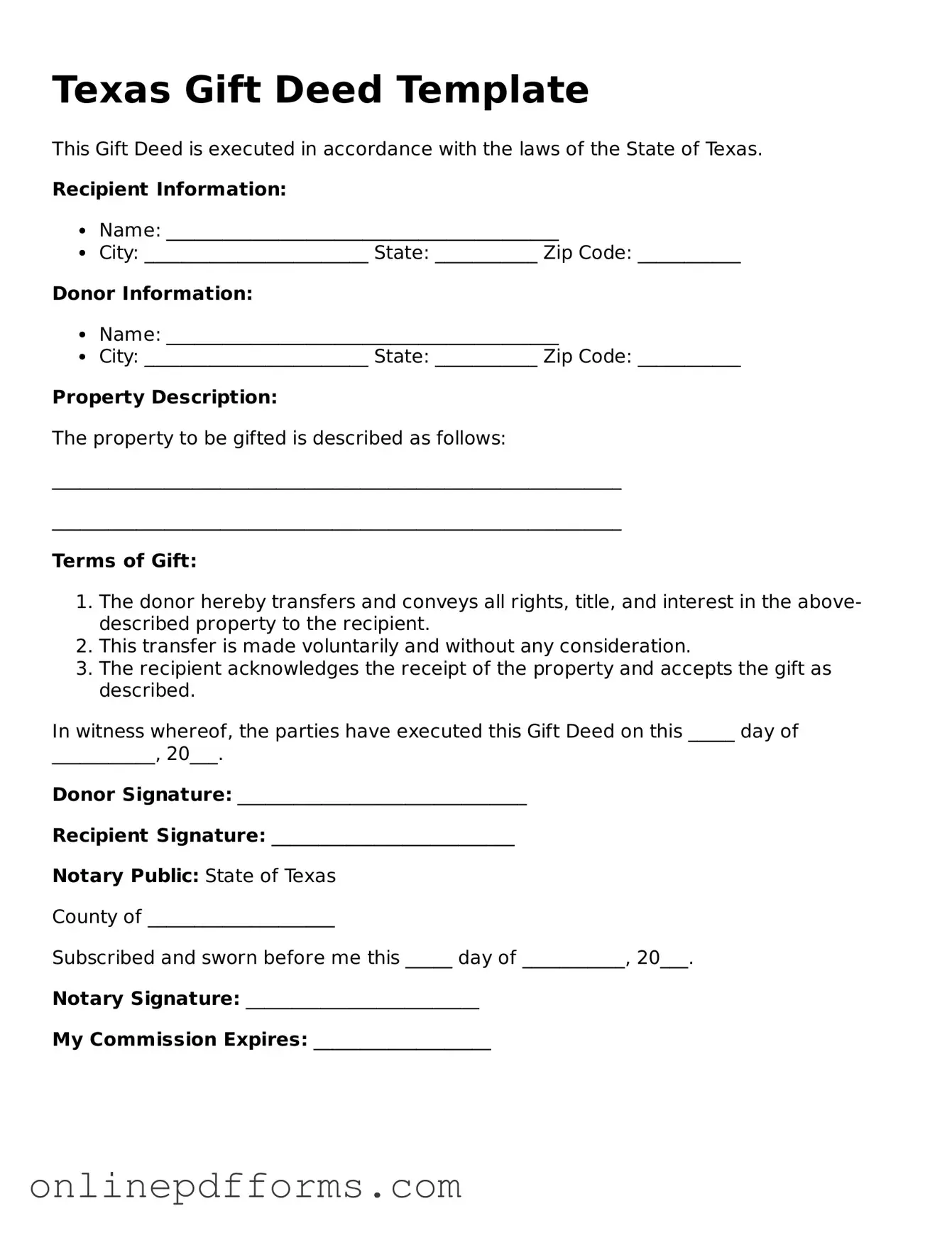A Quitclaim Deed is similar to a Gift Deed in that it transfers ownership of property without any warranties. In a Quitclaim Deed, the grantor conveys whatever interest they have in the property, if any, to the grantee. This type of deed is often used among family members or in situations where the parties know each other well. Like a Gift Deed, a Quitclaim Deed does not involve any exchange of money, making it a straightforward option for transferring property rights.
A Warranty Deed also shares similarities with a Gift Deed, particularly in the transfer of property ownership. However, unlike a Gift Deed, a Warranty Deed provides guarantees from the seller regarding the title's validity. This means that the grantor assures the grantee that they hold clear title to the property and have the right to transfer it. While both deeds accomplish the same goal of transferring property, a Warranty Deed offers more protection to the grantee than a Gift Deed does.
An Easement Deed, while primarily used for granting a right to use a portion of the property, can also resemble a Gift Deed in certain situations. For example, if a property owner allows a neighbor to use their land for access or utilities without any compensation, it can be viewed as a gift. Both documents involve the voluntary transfer of rights without financial consideration, although an Easement Deed specifically pertains to usage rights rather than full ownership transfer.
A Deed of Trust is similar to a Gift Deed in that it involves property transfer, but it serves a different purpose. This document is used primarily in real estate transactions to secure a loan. The property is transferred to a trustee, who holds it as collateral until the borrower repays the loan. While a Gift Deed transfers ownership outright without conditions, a Deed of Trust involves a conditional transfer aimed at securing a financial obligation.
A Lease Agreement can also share some characteristics with a Gift Deed, particularly when a property owner allows someone to occupy their property for free. In such cases, the arrangement may be considered a gift of use. Both documents involve the transfer of rights, but a Lease Agreement is typically a formal contract outlining terms, while a Gift Deed is a straightforward transfer of ownership without conditions.
For those looking to streamline their vehicle purchase process, using a legal form can significantly ease the transaction. The pdftemplates.info/texas-vehicle-purchase-agreement-form provides a clear outline of the necessary terms and conditions, ensuring that both buyer and seller are on the same page regarding the sale.
Finally, a Transfer on Death Deed (TOD) provides a method for property owners to transfer their property to beneficiaries upon their death, similar to a Gift Deed. The primary difference lies in the timing of the transfer. A Gift Deed transfers ownership immediately, while a TOD deed allows the property owner to retain full control during their lifetime. Both documents aim to simplify the transfer of property, but they cater to different needs and timelines regarding ownership change.
